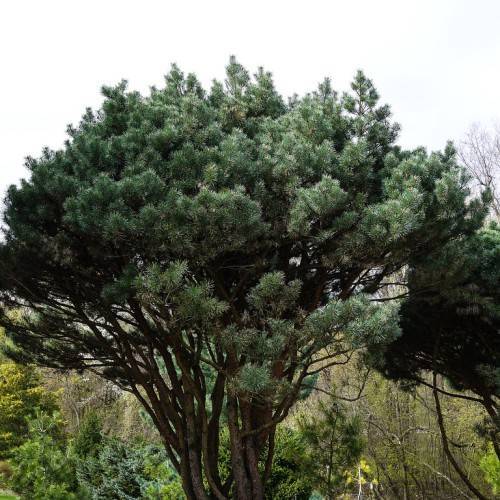
Scotch pine
Pinus sylvestris 'Beuvronensis'
Cycle:
Perennial
Watering:
Average
Hardiness Zone:
2 - 7
Flowers:
Flowers In Spring
Sun:
Full sun
Soil:
Acidic, Well-drained
Cones:
Yes
Leaf:
Yes
Growth Rate:
Moderate
Maintenance:
Low
Drought Tolerant:
Yes
Care Level:
Medium
watering
Scotch pines need shallow but regular watering, preferably once per week. An inch of water for each foot of its height is generally adequate. Ensure you are providing uniform and consistent moisture. Water slowly and deeply to avoid runoff, allowing the water to penetrate deeply into the soil. Water the soil of Scotch pines until it is thoroughly moist, but not soggy. In hot and dry months, you may need to water Scotch pines more often. Reduce watering when the weather cools, but don’t let the plant’s soil dry out.
sunlight
Scotch pine 'Beuvronensis' is a plant species that grows in sunny climates. It requires full sun, or 8-10 hours of direct sunlight per day, in order to perform optimally. It is very tolerant of many soil types, including sandy, loamy or clay-like soils, as long as the soil is well-draining. If the soil is too dry, the tree may suffer from heat stress in summer, and need supplemental watering in hot, dry climates. During the warm months, when temperatures reach 20 °C and higher, the tree should be exposed to at least 6 hours of direct sunlight. In cooler climates, it should still receive full sun all day. In winter, when temperatures are colder, it can handle moderate shade.
pruning
Scotch pines should be pruned lightly each spring at the beginning of their active growing season. The pruning should be done while the tree is still young, as the young trees are easier to shape and are less likely to suffer from dieback. When pruning a Scotch pine, aim to maintain the natural form and look of the tree, creating as natural of trees as possible in shape and size. Always use sharp, clean pruning tools and never leave large branches or stubs. Removing side branches that are crossed or growing too close together will open up the canopy and allow the branches adequate air circulation, and will also promote strong structure and healthy growth. The branches should be pruned in an outward-sloping direction as this helps to prevent water and snow from sitting on them and reduces the chance of disease and death.
